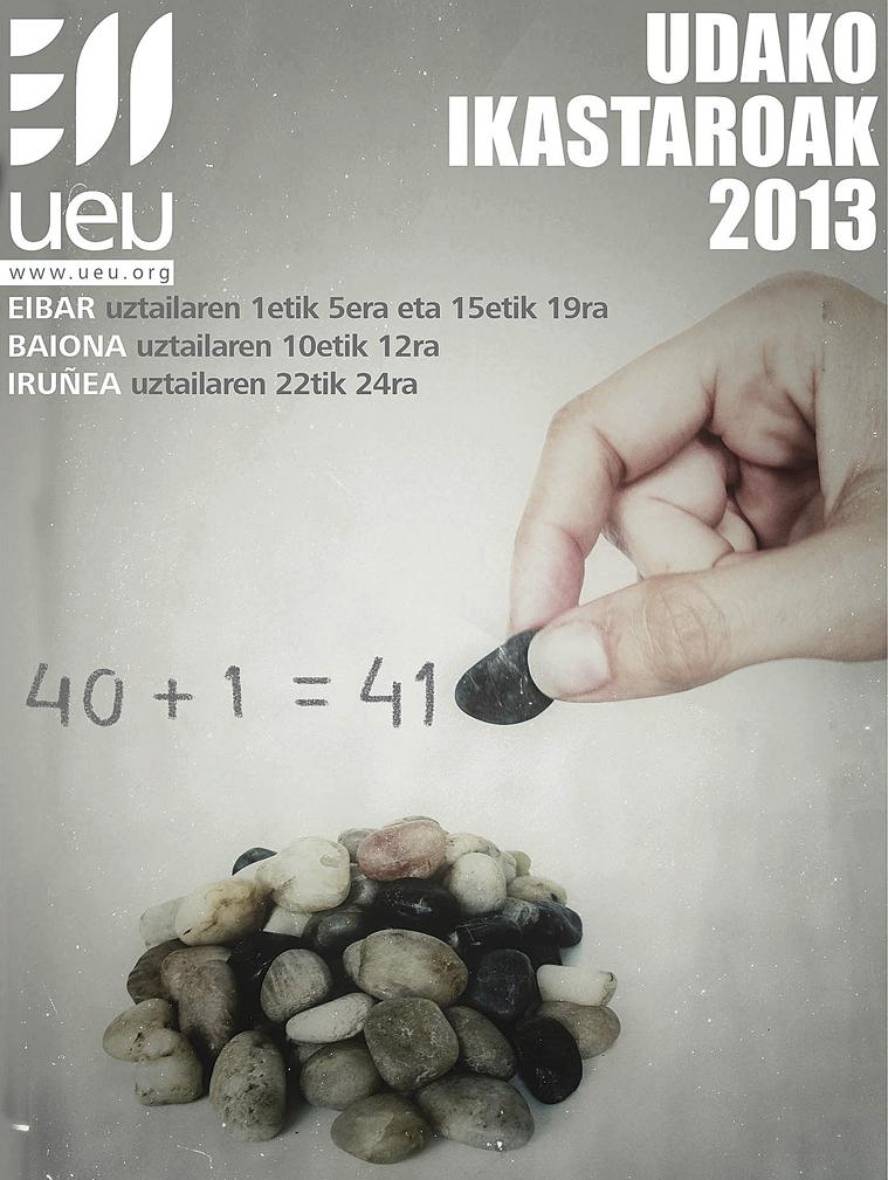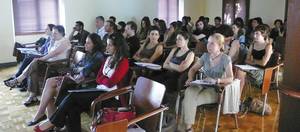Basque mathematicians everywhere
Matematika Aplikatua Saila, UPV/EHU
UEUko Matematika Saila; Matematika Saila, UPV/EHU
Matematika Aplikatua Saila, UPV/EHU
UEUko Matematika Saila; Matematika Saila, UPV/EHU
Matematika Saila, UPV/EHU; UEUko Matematika Saila
They use a symbolic language, they know how to swim well in the framework of theorems, slogans and demonstrations, they also know Basque... That is, they are Basque mathematicians.
Although the Mathematics Department of the UEU has been for some time without organizing any initiative, this is no sign that the kind of Basque mathematicians is being lost, since more and more Basques are working in mathematics. And in addition to the theoretical topics that sustain mathematics, his work extends to other areas. Thus, this year the 1st Congress of Basque Mathematicians. The UEU decided to organize a meeting in which Basque mathematicians could meet, share their experiences and start organizing the network.
As it was a first meeting, no specific topic was established for it and each one had the opportunity to address any topic related to its activity. The meeting, composed of a invited conference, twelve communication sessions and a round table, served to demonstrate the existence of Basque mathematicians.
Celestes and Terrestrial Mathematics
Javier Duoandikoetxea offered the invited lecture under the title "Mathematics of Heaven and Earth". Javier is Professor of Mathematical Analysis at the University of the Basque Country. His research work is abundant, but his activity is not limited only to research. Proof of this are the works written in historical, educational or informative fields, many of them written in Basque. Remember that problems are essential to be able to investigate in mathematics. But where do the new problems arise? He pointed out that some offer them to us mathematics itself, and that there are others that derive from the use of mathematics in the real world. He introduced both types and spoke of the latest news that have arisen about solving some problems that have been waiting for a long time response.
What work do Basque mathematicians do?
At the meeting, twelve communications were presented, dealing with different topics and all of them interesting. The lecturers approached from the UPV, the Public University of Navarra, AZTI-Tecnalia, the Hospital del Alto Deba, the Laboratory of Analysis and Architecture Systems LAAS of Toulouse and the Momentive Specialty Chemicals. Speakers of different places and very diverse subjects.
First of all, we focus on the use of stochastic processes of modeling Internet networks of great importance in today's society, which allow to optimize the performance of telecommunications systems. In the same line of optimization, another speaker spoke about the theory of games. The theory of games aims to analyze the strategic behaviors of individuals, through which the decisions to be made by the player are investigated, taking into account what other players do.
Another of the problems analyzed was when a sequential random process should be stopped to obtain the best result. For example, instead of interviewing all candidates to fill a position, when should we interrupt the talks by ensuring we have chosen the best candidate? We saw an experimental mathematical pathway to solve this stop rule problem through a computer program.
The meeting also addressed the applications of mathematics in the field of health. In the Autonomous Community of the Basque Country, we were able to know the model of discrete event for the evaluation of the early detection program of breast cancer since 1996. This model allows calculating the costs of mammography, diagnostic tests and treatments, as well as a life expectancy adjusted to the quality of life. Another of the health issues analyzed was the design of vaccines, specifically the size of them. Large vaccines, in addition to being complex to work, are expensive and have more chances of causing an autoimmune reaction.
In addition to analyzing the real problems, we had the opportunity to work different theoretical developments in different fields of mathematics. In the field of algebra, for example, some special graphs, p-adis trees, and the peculiar behavior of their group of automorphisms. And in the field of topology, another speaker spoke of the properties of the ordered structure called semi-order defined by binary relations on a set and the requirements that must be met to be representative. Finally, in the field of mathematical analysis, we had the opportunity to learn how to make a numerical approximation of the exponential of several matrices that are presented in the context of the numerical integration of the Schrödinger equation.
Being 2013 the international year of Statistics, this initiative took a special place in the meeting. We were able to know the objectives of the initiative: to make known the impact of statistics in different areas of society and to promote statistics as a profession, especially among high level students.
The mathematicians of AZTI-Tecnalia explained to us the work they do in relation to the sea. In particular, his work focuses on advising on the management of fishing resources. For this purpose, they evaluate fish populations and simulate their evolution.
We passed from the sea to the sky to know the mathematical and computational techniques that can be used in the control of air quality. A descriptive statistical analysis of the level of ozone was performed and the model of ozone prediction was presented to us.
To finish, we saw that mathematics is also applicable to the political field, through a study based on the electoral results of the last fifteen years in Hego Euskal Herria. Specifying the peculiarities of the municipalities of each country, the speaker offered us some clues to understand the reason for the unexpected results of the elections.
If we look at these presentations, it is clear that we cannot say that mathematics is in few places.
In general, the assessment was very positive and was a repeatable experience. It became clear that we are many Basque mathematicians and that our work reaches places as different as many.







